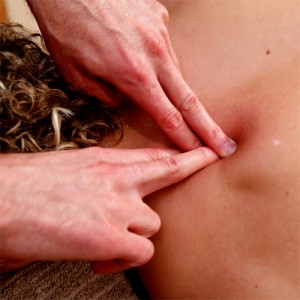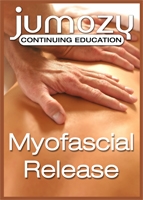Myofascial Release – Learn How To Offer This Treatment for Your Clients
0 In addition to working with private clients, you can offer myofascial release as a complementary treatment in chiropractic offices. Personal networking events in your city are a surefire way to connect with chiropractors in your area.
In addition to working with private clients, you can offer myofascial release as a complementary treatment in chiropractic offices. Personal networking events in your city are a surefire way to connect with chiropractors in your area.
With myofascial release, an hour session can address specific issues. However, because of the time required to perform the technique, you will need 1.5 hours for a full body session. For example, one stroke along the erector spinae, the major muscle group of the back, can take one to two minutes.
Myofascial release is a type of bodywork which employs a steady, constant physical pressure, working through restricted areas in the soft tissues of the body, mainly muscular and connective tissues.
The phrase “myofascial” is derived from two words. “Myo” is from the Greek word “my”, referring to “muscle.” “Fascial” is from the Latin word “fascia”, meaning “bandage”. Fascia refers to a type of connective tissue that encompasses the entire body, while encasing each individual structure in the body. So every bone, every muscle, every organ, every vein, every artery has a layer of fascia that runs around it.
Fascia is a very dense tissue. And, it actually formulates one complete, continuous structure of the body. A good way to think about fascia is to envision a full-body suit out of knit fibers that not only covers the body, but also, has little pockets and compartments to house your lungs, heart, muscles, and digestive organs.
By its very nature, fascia provides a key supportive structure for all the body’s systems. Through its continual and multi-directional network of fibers, the fascia maintains the structural integrity through motion. The fascia creates a girdle to keep all the organs in place.
In a state of optimal health, the fascia is very pliable. Healthy fascia tissue can stretch and move.
Another helpful visual comparison is a woven shopping bag. Similar to fascia, the bag is constructed with a network of multi-directional fibers. As you put more items into the bag, it expands. It adapts. It can twist and move. But, there’s also a sense of containment.
 Through the development of disease or injury, the fascia can become restrictive. It can become a source of tension, exerting pressure, causing pain, and limiting mobility. To illustrate, let’s imagine a blanket is a layer of damaged fascia. Let’s say some tissue gets restricted. Let’s pull on a thread. What happens? It becomes tight. What used to be a very fluid sheet of fabric, now, becomes a rather rigid and bunched up knot of fibers. Notice that just one strand can cause this type of congestion. When fascia is constrictive, it causes a similar kind of knotting in the body.
Through the development of disease or injury, the fascia can become restrictive. It can become a source of tension, exerting pressure, causing pain, and limiting mobility. To illustrate, let’s imagine a blanket is a layer of damaged fascia. Let’s say some tissue gets restricted. Let’s pull on a thread. What happens? It becomes tight. What used to be a very fluid sheet of fabric, now, becomes a rather rigid and bunched up knot of fibers. Notice that just one strand can cause this type of congestion. When fascia is constrictive, it causes a similar kind of knotting in the body.
So, our job as massage therapists is to smooth out the fiber, allowing the body to move and function properly.
During your client consultation, ask your clients if they feel any tension or pain to get a general sense of their symptoms. “What are they experiencing?” “What has brought them in for a session today?
Then, during the session, look for visual and physical cues, imbalances caused by tension. Elevated shoulders…, Structural differences in the musculature from side to side…, Differences in the rotation of the arms or legs at the shoulder and hip sockets…Pockets of tension in the muscle tissue.
 Myofascial release remains the foundation of John Hoffmann’s work in chiropractic offices, as well as massage spas because of its effectiveness in alleviating pain and in creating healthy changes in the soft tissues of the body.
Myofascial release remains the foundation of John Hoffmann’s work in chiropractic offices, as well as massage spas because of its effectiveness in alleviating pain and in creating healthy changes in the soft tissues of the body.
If you would like to learn Myofascial Techniques so that you can incorporate them into your massage therapy sessions you have several options:
- Learn from Online streaming videos of Myofascial Release Training
- Learn from a Myofascial Release DVD
- Get your CEUs and learn with an Online Myofascial Release Continuing Education Course
All of these training resources can teach you how to address specific client complaints.
 John Hoffmann, LMT is the featured expert in the Myofascial Release Techniques training video, award-winning Craniosacral Therapy Techniques training video, Online Craniosacral Therapy CE Course and Online Myofascial Release CE course.
John Hoffmann, LMT is the featured expert in the Myofascial Release Techniques training video, award-winning Craniosacral Therapy Techniques training video, Online Craniosacral Therapy CE Course and Online Myofascial Release CE course.
He is a Licensed Massage Therapist and Massage Therapy Instructor and has been practicing in the Los Angeles area for over 15 years. His study of the body began with dance training. Developing a strong, intuitive, highly kinetic understanding of how the body works made the transition from dancer to body worker a natural, logical progression. He completed his massage therapy studies at the Institute of Psycho-Structural Balancing in California and is now the featured expert in online training videos and online massage CE courses.




